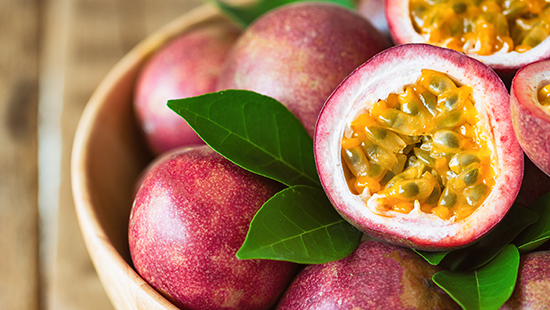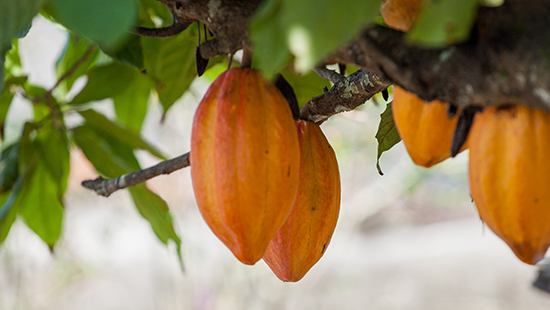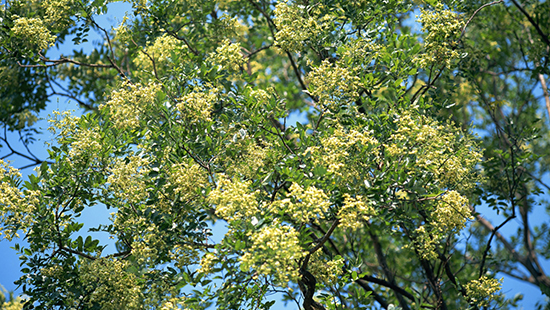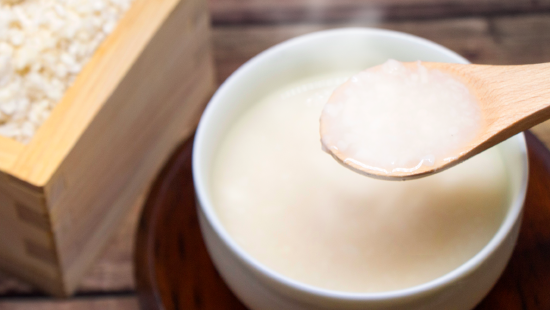1. About Cocoa
Cocoa is made from the same cocoa beans as chocolate. The beans are harvested from the cocoa tree, fermented, dried, shelled, roasted, and crushed into liquid cocoa mass. From this cocoa mass, cocoa butter is pressed into cocoa. Cocoa is rich in functional ingredients such as polyphenols, which are inherent in cocoa beans, dietary fiber such as lignin, and mineral components, with the oil and fat removed.
Among the low-polymerization cocoa polyphenols, a component called cocoa flavanols has been studied for its health functions around the world, and its functions are being revealed one by one. We have been scientifically examining the wide range of functionalities of cocoa for more than 20 years.
2. The H. pylori inhibitory effect of cocoa
H. pylori (H.pylori) is closely related to gastritis and gastric ulcers and is considered a risk factor for gastric cancer. Therefore, we examined the effect of cocoa on H. pylori at the in vitro and in vivo.




3. The antibacterial effect of cocoa on periodontal disease-related bacteria
In recent years, periodontal disease has been shown to be closely related to some lifestyle diseases. And nowadays, more than 80% of adults have periodontal disease. Therefore, the antibacterial effect of cocoa was tested at the in vitro and in vivo levels using the major bacteria associated with periodontal disease, P. gingivalis, F. nucleatum, and P. intermedia.
These results indicate that cocoa has an excellent antibacterial effect against two types of periodontal disease-related bacteria.

The results showed that cocoa showed the strongest reduction in the number of viable bacteria, followed by black tea with a strong antibacterial effect. The amount of polyphenols per cup of normal consumption was about 4 times higher in cocoa than in black tea, so cocoa was found to be the beverage with the strongest antibacterial effect for normal consumption.

The results showed that there was no significant change in the total number of bacteria in saliva due to cocoa consumption, indicating that cocoa had no effect on commensal bacteria. On the other hand, the percentages of periodontal disease-associated bacteria, such as P. gingivalis, Fusobacteriaceae and Prevotella intermedia to total bacteria tended to decrease with cocoa consumption. Furthermore, a stratified analysis of eight subjects with strong halitosis showed that the amount of volatile sulfur compounds in the exhaled air of the cocoa group after two weeks of cocoa consumption was lower than that before consumption. However, when cocoa consumption was stopped, the intensity of bad breath returned to the original level.
These results indicate that cocoa consumption has the ability to reduce the number of periodontal disease-related bacteria in the mouth and the halitosis component in the exhaled breath.
4. Effects of Cocoa on Infection Control Against Influenza Virus
The effects of cocoa, which has a number of antimicrobial properties, on viruses were examined at the in vitro level and in human studies.
⟨in vitro 1⟩ Two seasonal influenza viruses, type A [A/New Caledonia/20/99 (H1N1) and A/Wyoming/3/03 (H3N2)] and one type B [B/Shanghai/361/02], as well as two avian influenza viruses, were identified as representatives of influenza viruses.
A/Turkey/Ontario/7732/66 (H5N9) and A/Kyoto/04 (H5N1)] were used to test the inhibitory effect of cocoa on infection of the canine kidney epithelial cell line, MDCK cells, using hot water extracts of cocoa.
As a result, it was found that adding hot water extract of cocoa to the culture medium inhibited infection of all influenza viruses in a concentration-dependent manner. The hot water extract of cocoa did not show any cytotoxicity to MDCK cells.

⟨in vitro 2⟩ The mechanism by which cocoa exerts a suppression of infection with the influenza virus [A/Wyoming/3/03 (H3N2)] was examined.
The number of infected cells was examined by adding hot water extracts of cocoa to the culture medium before virus adsorption (addition time from 30 minutes before infection to the time of infection), during adsorption (addition time from the time of infection to 1 hour after infection), and after adsorption (addition time from 1 hour after infection to 16 hours after adsorption).
The results showed that only when the hot cocoa extract was present at the time of virus adsorption, the infection was inhibited (100% inhibition rate), whereas when it was added before or after virus adsorption, the inhibition rate was low and no effect was observed.
These results indicated that hot water cocoa extract could inhibit the adsorption of the influenza virus by cells.
It has been confirmed that the soluble polyphenols and at least two other components in the cocoa with infection-inhibiting activity are present.

⟨Clinical Test⟩ The effectiveness of cocoa as a countermeasure against influenza was verified in a human study. In this study, 123 healthy adults with no history of new strains of influenza were asked to drink a beverage made of cocoa powder (made by Morinaga) dissolved in hot water with double the cocoa concentration in hot water for a total of three weeks, from one week before to two weeks after the vaccination against new strains of influenza, and to drink one cup a day in the morning to neutralize the new strains of influenza virus. The effects on antibody titer and natural killer cell activity (NK activity) were measured.
As a result, the antibody titer against the novel influenza virus increased in the cocoa group together with the control group that ingested hot water, but there was no significant difference between the cocoa group and the control group.
On the other hand, the cocoa group showed a significant increase in NK activity compared to the control group, indicating that cocoa has the potential to suppress viral infection by enhancing human natural immunity, since NK activity is an indicator of natural immunity.
5. Cocoa's bowel control function (improving bowel movements and inhibiting fecal odor)
Cocoa is rich in insoluble dietary fiber as well as polyphenols and minerals such as cocoa flavanols. Lignin, the most abundant insoluble fiber at approximately 60%, was studied for its intestinal regulating effect in 22 healthy men and women, aged 20-60 years, who were prone to constipation, consuming a cocoa drink with sweetened lignin and a placebo drink without cocoa for 2 weeks each, and the number of bowel movements and the number of bowel movements were compared. A crossover study was conducted to determine the amount, fecal properties, and fecal odor of cocoa intake.
As a result, there was a significant increase in the number of bowel movements in the cocoa group compared to the placebo group. In addition, the change in fecal odor (ammonia level) was significantly reduced in the cocoa group compared to the placebo group.
These results suggest that cocoa, which is rich in lignin, an insoluble dietary fiber, improved the frequency of bowel movements and reduced the amount of ammonia in the stool, thereby reducing fecal odor.
6. the cooling effect of cocoa
Young women who were aware of "chilliness," a constitutional tendency to get cold easily, were asked to consume cocoa prepared at 70 to 75 degrees Celsius, and the effect on chilliness was verified. As a result, in the body surface temperature of the back of the hand measured with a medical thermography "Infra-Eye" (Nihon Kohden), the cocoa group maintained the temperature rise longer than the coffee, green tea, and hot water groups.
Furthermore, the blood flow rate in the fingertip measured by the bedside monitor BSM-2301 (Nippon Photoelectric Industry Co., Ltd.) increased in the cocoa group compared to the coffee group.
These results suggest that cocoa intake helped to maintain body surface temperature, and this effect was accompanied by a change in blood flow.
This effect was also confirmed when the temperature of the test beverage was adjusted from 0 to 3℃.
Y. Kamei et. al., Science of Foods. 2, 4 (2003)
T. Nadamoto et. al., Josei no shikkan to biyou no tameno kinouseisozai no kaihatsu. 32 (2014)
A. Ariyama et. al., Nippon Shokuhin Kagaku Kaishi. 56(12), 628 (2009)
7. The ability to maintain and enhance the warm-up exercise effect of cocoa
Warm-up exercises performed as a preparatory exercise before starting exercise have the following benefits: increased body temperature, metabolism, and muscle temperature; increased flexibility due to increased range of motion of the joints; increased neurological effects; prevention of orthopedic disorders; and psychological effects. However, this warm-up effect disappears over time, making it difficult to sustain the effect. Therefore, the cocoa polyphenol contained in cocoa has the effect of improving blood flow, cooling properties, and maintaining body surface temperature, so we thought that it might contribute to the continuation of the warm-up effect, and conducted the test.
⟨Clinical Test 1⟩ Male university students belonging to the tennis club ingested cocoa flavanols, a polyphenol contained in cocoa, and the persistence of the warming-up effect was tested.
The results showed that the cocoa flavanols consumed a beverage containing cocoa flavanols before the warm-up ( flavanol group ) and the cocoa flavanols and ginger extracts consumed a beverage containing cocoa flavanols and ginger extracts ( flavanol-ginger group ) showed greater improvements in body flexibility, muscle strength, instantaneous force, and physical activity than the placebo group consuming the placebo beverage with the same flavor. and performance force and the medial gastrocnemius muscle hardness remained significantly higher between 30 and 90 minutes after the end of the warm-up. Similar results for muscle hardness were observed when the room temperature was adjusted to 15℃ and 25℃.
On the other hand, there was no difference in the effect of the test beverage on temperature changes in the deep body temperature, but in body surface temperature, the flavanol group and flavanol-ginger group remained significantly higher than the placebo group at 90 minutes after the end of the warm-up in the test environment at 15℃/40% of room temperature and between 60 and 90 minutes after the end of the warm-up in the test environment at 26℃/40% of room temperature and 20℃/40% of room temperature and humidity.

In summary, the ingestion of cocoa flavanols prior to warm-up exercises in young adults prolonged the effects of warm-up exercises and had a positive effect on subsequent physical function.
⟨Clinical Test 2⟩ The warm-up effect in healthy elderly people was also examined.
In the same way as ⟨Test 1⟩ with young adults, the effect of warming up exercise with cocoa flavanols was tested on 10 healthy elderly men and women aged 64-73 years who were active supporters of the "Lively and lively Longevity Division, Welfare Department, Ashikaga City City Hall (changed to the Lively and lively Division, Health and Welfare Department from FY2016), which targets the elderly.

As a result, body surface temperatures on the posterior surface of the lower leg and dorsal surface of the foot on the persistence of skin surface temperature, which is an indicator of flexibility, as well as leg extension strength and peripheral circulation enhancement, were significantly higher in the cocoa flavanol group than in the placebo group from 60 to 90 minutes after the end of the warm-up exercise (see figure below).
In addition, in balance function (balance), which is related to fall prevention in the elderly besides flexibility and muscle strength, the cocoa flavanols maintained significantly higher values than the placebo group from 30 to 90 minutes after the end of the warm-up period.

Although the study was conducted during the summer months, similar results were obtained in the winter months.
These results showed that taking cocoa flavanols before warming up prolonged the warming up effect in both young adults and older adults. Furthermore, the cocoa flavanols in cocoa were found to have the ability to sustain the effects of warm-up exercises in sports players of any age and season.
A. Okubo et. al., Jpn. Pharmacology and Therapy. 47, 917 (2019)
R. Imada et. al., Jpn. Pharmacology and Treatment. 46 599 (2018)
A. Okubo et. al., Jpn. Pharmacology and Treatment. 46, 609 (2018)
8. Cocoa's ability to regulate hydrogen production in the body
Molecules of hydrogen are produced in the intestinal tract and then diffuse into the blood and tissues to weaken the action of reactive oxygen species (hydroxyl radicals), which are noted for their ability to reduce various forms of oxidative stress. Milk is considered important as a source of biological hydrogen as well as calcium intake.
Therefore, a crossover study was conducted to examine the internal hydrogen production of cocoa, cocoa and milk in healthy adult men and women aged 21-49 years.
Subjects were stratified according to their lactose digestibility and divided into two groups: one group with high hydrogen production after drinking milk and the other with low hydrogen production.
The results showed that hydrogen production by cocoa consumption was observed in the group with low lactose digestibility. In addition, hydrogen production by the simultaneous intake of cocoa and milk was enhanced in the group with high lactose digestibility and suppressed in the group with low lactose digestibility.
From these results, the hydrogen regulatory function of cocoa in the body was revealed. In addition, it was suggested that the intake of cocoa by people with low lactose digestibility and tendency to diarrhea by milk consumption suppressed hydrogen production in the body and may help to reduce discomfort caused by milk consumption.
H. Inagaki et. al., Stable Isotopes and Biogas Medicine. 9, 11 (2017)


























